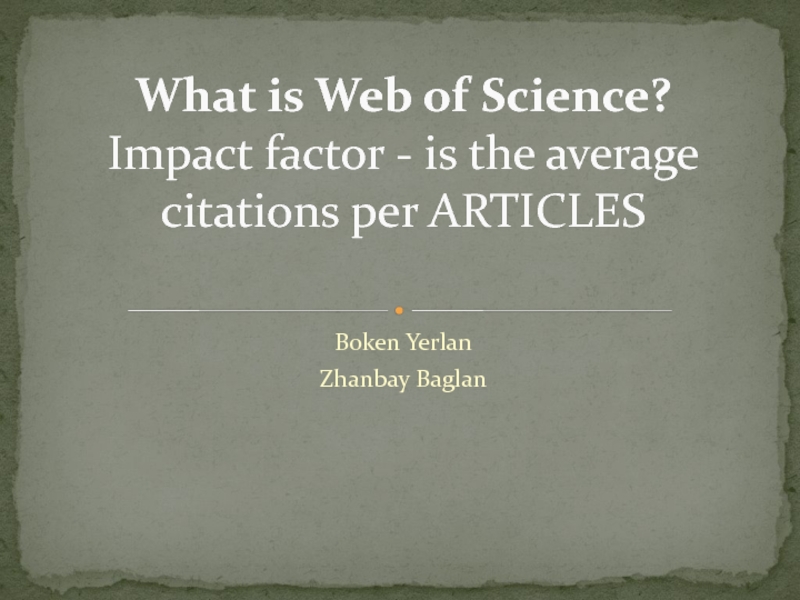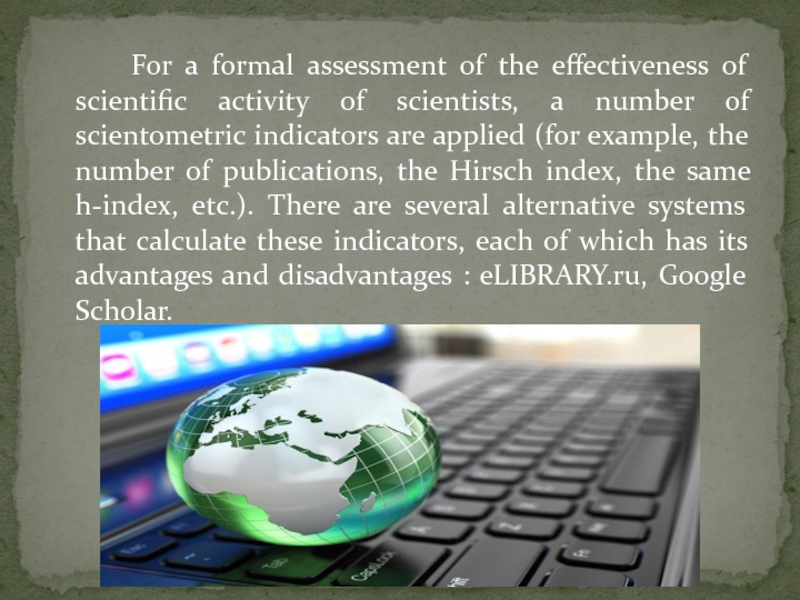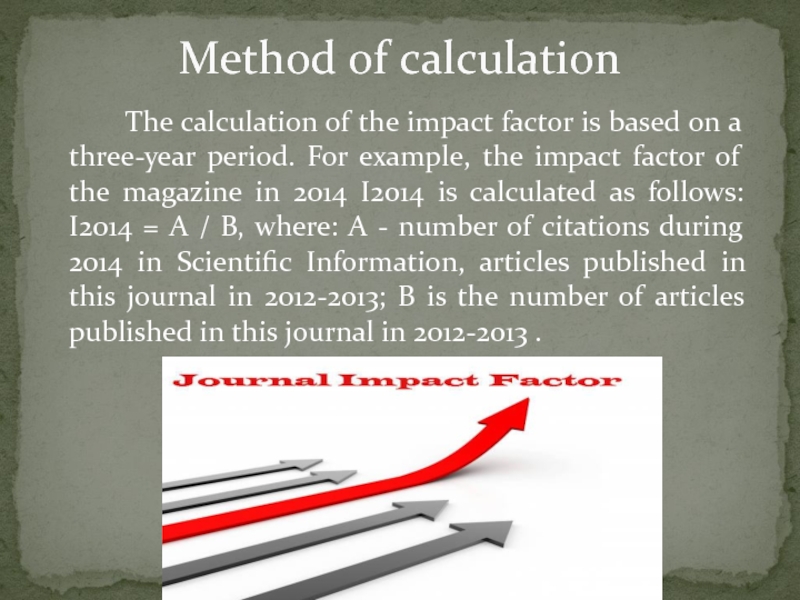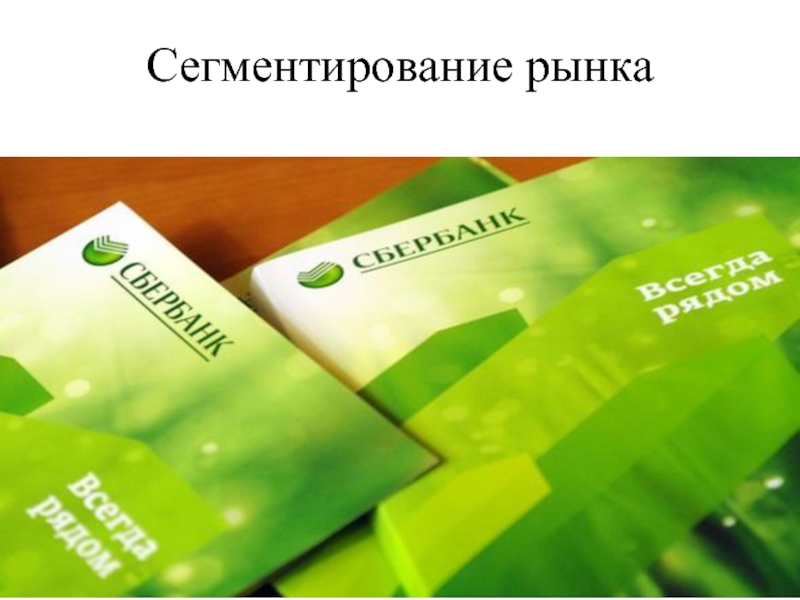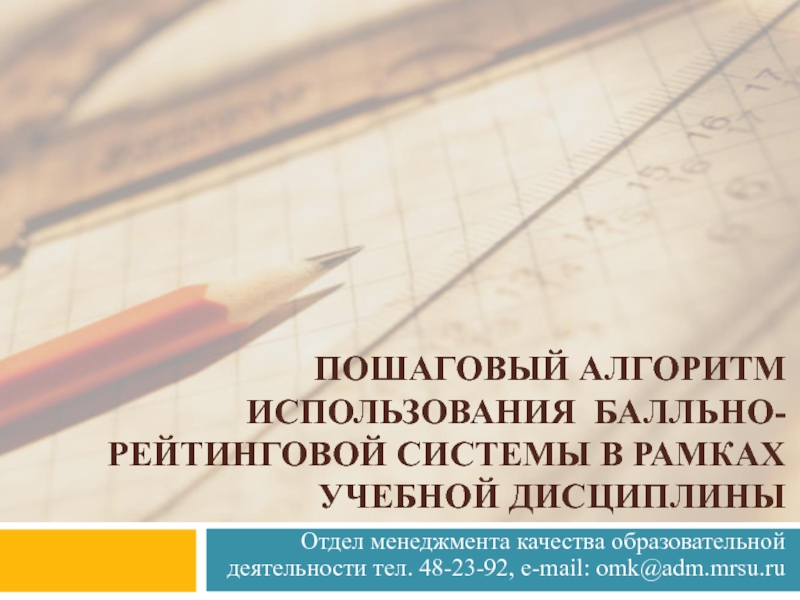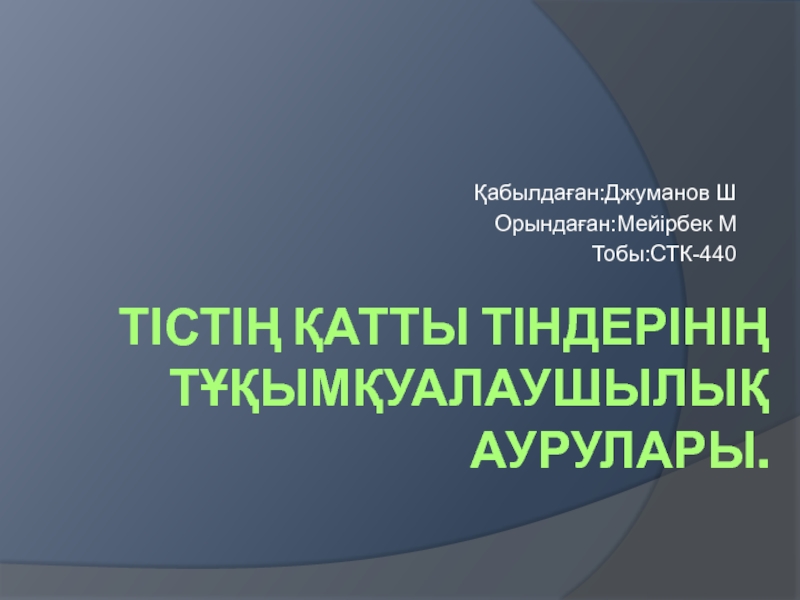Разделы презентаций
- Разное
- Английский язык
- Астрономия
- Алгебра
- Биология
- География
- Геометрия
- Детские презентации
- Информатика
- История
- Литература
- Математика
- Медицина
- Менеджмент
- Музыка
- МХК
- Немецкий язык
- ОБЖ
- Обществознание
- Окружающий мир
- Педагогика
- Русский язык
- Технология
- Физика
- Философия
- Химия
- Шаблоны, картинки для презентаций
- Экология
- Экономика
- Юриспруденция
What is Web of Science? Impact factor - is the average citations per ARTICLES
Содержание
- 1. What is Web of Science? Impact factor - is the average citations per ARTICLES
- 2. Web of Science (WoS, formerly ISI Web
- 3. Database:Web of Science Core СоllectionCurrent
- 4. For a formal assessment of the effectiveness
- 5. Impact factor (IF, or IF) is a
- 6. The calculation of the impact factor is
- 7. The journal's IF depends on the field
- 8. The positive properties of the impact factor:Wide
- 9. Thank you for attention!!!
- 10. Скачать презентанцию
Web of Science (WoS, formerly ISI Web of Knowledge) is a search platform that combines abstract databases of publications in scientific journals and patents, including databases that take into account the
Слайды и текст этой презентации
Слайд 1Boken Yerlan
Zhanbay Baglan
What is Web of Science?
Impact factor - is
the average citations per ARTICLES
Слайд 2 Web of Science (WoS, formerly ISI Web of Knowledge) is
a search platform that combines abstract databases of publications in
scientific journals and patents, including databases that take into account the mutual citation of publications, developed and provided by Thomson Reuters. Web of Science covers materials on natural, technical, social, humanities and arts. The platform has built-in capabilities to search, analyze and manage bibliographic information.Web of Science
Слайд 3 Database:
Web of Science Core Соllection
Current Contens Connect
BIOSIS Citation
Index
Data Citation index
KCI-Korean Journal Database
Russian Science Citation Index
SciELO Citation Index
Zoological
RecordDerwent Innovations Index
Medline
Resources on the Web of Science platform
Слайд 4 For a formal assessment of the effectiveness of scientific activity
of scientists, a number of scientometric indicators are applied (for
example, the number of publications, the Hirsch index, the same h-index, etc.). There are several alternative systems that calculate these indicators, each of which has its advantages and disadvantages : eLIBRARY.ru, Google Scholar.Слайд 5 Impact factor (IF, or IF) is a numerical indicator of
the importance of a scientific journal. Since the 1960s, it
has been calculated annually by the Institute for Scientific Information (ISI), which was acquired by Thomson Corporation in 1992 and is now called Thomson Scientific, and is published in the journal Journal Citation Report.According to the IF, the level of journals is assessed, the quality of the articles published in them, provides financial support to researchers and accepts employees for work. Impact factor has, though a large, but ambiguously estimated impact on the evaluation of research results.
Impact factor
Слайд 6 The calculation of the impact factor is based on a
three-year period. For example, the impact factor of the magazine
in 2014 I2014 is calculated as follows: I2014 = A / B, where: A - number of citations during 2014 in Scientific Information, articles published in this journal in 2012-2013; B is the number of articles published in this journal in 2012-2013 .Method of calculation
Слайд 7 The journal's IF depends on the field of research and
its type; From year to year it can vary significantly,
for example, dropping to extremely low values when changing the name of the journal and so on. Nevertheless, for today IF is one of the important criteria by which it is possible to compare the level of scientific research in close fields of knowledge.Advantages and disadvantages
Слайд 8 The positive properties of the impact factor:
Wide coverage of scientific
literature - more than 8,400 journals from 60 countries are
indexed;The results are public and easily accessible;
Simplicity in understanding and use;
Journals with high IF usually have a more stringent peer review system than logs with low IF.
